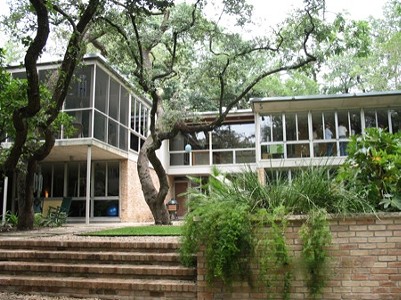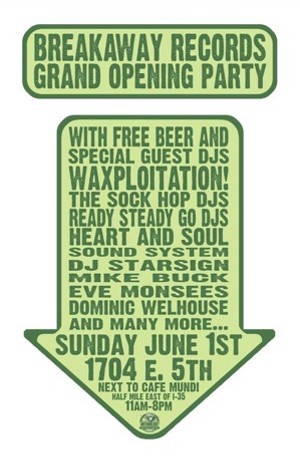Antone's Nightclub
Modernism and Me
Like many who have lived through its incarnations and mutations, I have a complicated relationship with mid-century modernism. One on end is a spare purity that makes me feel as if I've wandered, terribly miscast, into some Antonioni film. On the other is what the visions of Frank Lloyd Wright, Eero Saarinen, and the Eameses had transformed (some might say devolved) into by the 1970s – tract caves darkened by endless paneling, stain-resistant shag, and mustard linoleum, with the occasional kitschy bright spot (lava lamps and rocket-shaped sugar bowls) – and led eventually, one supposes, to IKEA.
In the middle is the bliss: the elision of the indoor/outdoor divide, the light and the beautiful wood, the clean lines and glass and cool, soothing terrazzo floors. How is it possible not to feel ambivalent? Add in the economic ironies – a style that at least in part was developed in response to the post-WWII housing boom and an attempt to produce pleasurable, affordable homes for the masses (see, most notably, the Case Study Houses) is by now primarily available only to upper-income brackets – and one can whip oneself into quite the Marxian dither.
And yet: It's a style that makes one want to transcend pragmatic worldliness ... so airy ... so peaceful ... so very, very pretty ...
The Heritage Society of Austin (motto: "This isn't your grandmother's heritage society") understands this roller coaster of excitement and anxiety, and on May 17, their Atomic Austin: Mid-Century Modern Heritage Homes Tour delved boldly into the contradictions and eccentricities, not to mention the considerable charms, of Austin mid-century. The supporting literature was substantive; the docents were decked as Fifties housewives (apron fetish alert); and the focus was highly local, with an emphasis on the "low-slung, mid-century blend of a machine-age aesthetic and Hill Country style," as Sydney Rubin (also one of the homeowners) put it in the crib notes, by such ATX architectural notables as Charles Granger, Arthur Fehr, and A.D. Stenger.











